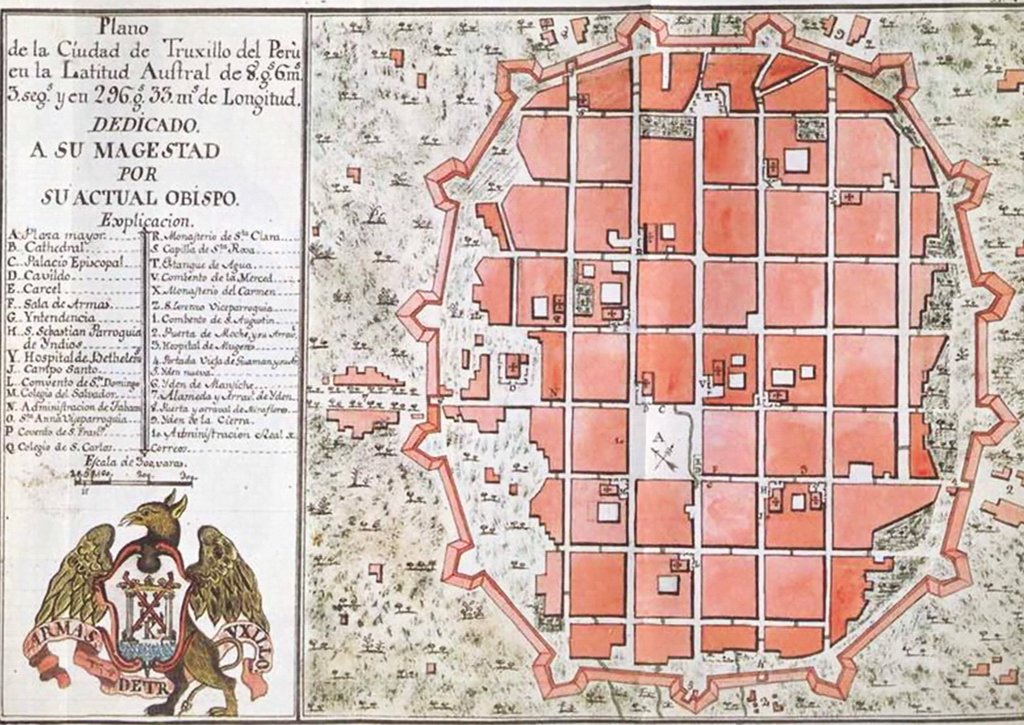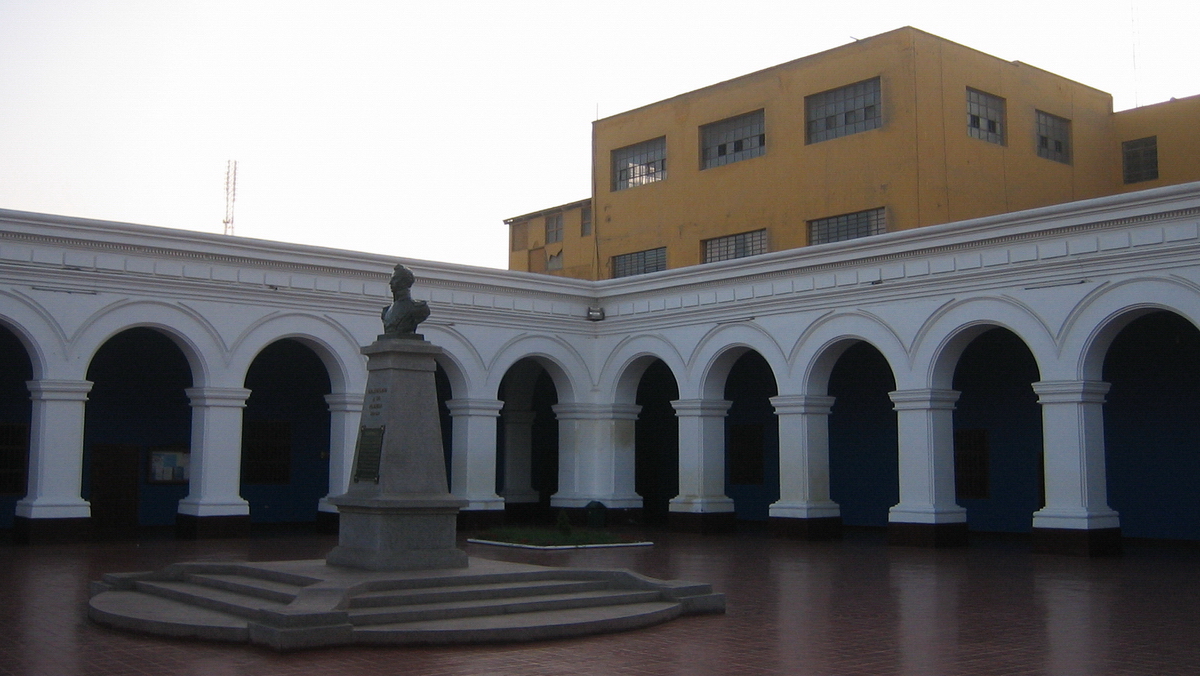|
Gerardo Chávez
Gerardo Chávez López (16 November 1937 – 22 June 2025) was a Peruvian artist from Trujillo whose artistic foundation has helped to develop a cultural environment in the city through the Toy Museum that was opened in 2001 and with the Museum of Modern Art which he founded, as well as Cultural Space "Angelmira" in honor of his brother. Chávez was one of the direct successors of the North Group born in the Trujillo city in the first half of the 20th century. In 2012, he was recognized as the most important Peruvian plastic artist in activity. He had been appointed chairman of the board for the Art and Culture of Trujillo. Chávez died on 22 June 2025, at the age of 87. [...More Info...] [...Related Items...] OR: [Wikipedia] [Google] [Baidu] |
Trujillo, Peru
Trujillo (; ; Mochica language, Mochica: ''Cɥimor'') is a city in coastal northwestern Peru and the capital of the Department of La Libertad. It is the third most populous city and center of the List of metropolitan areas of Peru, third most populous metropolitan area of Peru. It is located on the banks of the Moche River, near its mouth at the Pacific Ocean, in the Moche Valley. This was a site of the great prehistoric Moche (culture), Moche and Chimu cultures before the Inca conquest and subsequent expansion. The Independence of Trujillo from Spain was proclaimed in the Historic Centre of Trujillo on December 29, 1820, and the city was honored in 1822 by the Congress of the Republic of Peru with the title "Meritorious City and Faithful to the Fatherland", for its role in the fight for Peruvian independence. Trujillo is the birthplace of Peru's judiciary. In 1823, Riva Agüero settled in Trujillo after being deposed, but his government lacked legal recognition, while the Cong ... [...More Info...] [...Related Items...] OR: [Wikipedia] [Google] [Baidu] |
North Group
The North Group was an intellectual community comprising various writers, artists, philosophers, politicians, and intellectuals from Northern Peru, especially from the La Libertad Region. It was founded in 1915 in the city of Trujillo, Peru, Trujillo. At first known as the "Bohemians of Trujillo," the community adopted the name "the North Group" in 1923. Early leaders included journalist Antenor Orrego and poet José Eulogio Garrido. Its most prominent members included poet César Vallejo, Cesar Vallejo, politician Victor Raul Haya de la Torre, Alcides Spelucín, Macedonio de la Torre, Juan Espejo Asturrizaga, Francisco Xandóval, and Ciro Alegría. This group inspired the work of Eduardo González Viaña, one of its modern successors. The North Group was started in order to create artistic and social renewal during the time of global cultural crisis that occurred after the First World War. It was extremely important to the cultural development of Peru, and several of its membe ... [...More Info...] [...Related Items...] OR: [Wikipedia] [Google] [Baidu] |
Plastic Art
Plastic arts are art forms which involve physical manipulation of a ''plastic medium'', such as clay, wax, paint or even plastic in the modern sense of the word (a ductile polymer) to create works of art. The term is used more generally to refer to the visual arts (such as painting, sculpture, ceramics, architecture, film and photography), rather than literature and music. Materials for use in the plastic arts, in the narrower definition, include those that can be carved or shaped, such as stone or wood, concrete, glass, or metal. History The word ''plastic'' draws from the Ancient Greek (''plastikós''), which means 'to mold' or 'to shape'. It has long preceded its dominant modern meaning as a synthetic material. The term ''plastic arts'' has been used historically to denote visual art forms (painting, sculpture, and ceramics) as opposed to literature or music. The related terms ''plasticity'' and ''plasticism'' became more widely used in the early 20th century by critics d ... [...More Info...] [...Related Items...] OR: [Wikipedia] [Google] [Baidu] |
National University Of Trujillo
The National University of Trujillo () (UNT) is a major public university located in Trujillo, Peru, capital of the department of La Libertad. The university was founded by Simón Bolívar and José Faustino Sánchez Carrión, who met in Huamachuco; they signed the decree of foundation on May 10, 1824, before Peru's independence from Spain. National University of Trujillo, was the first republican university founded in Peru. UNT has approximately 16,000 students in 13 academic faculties, making it one of the largest universities in the country. The current rector is Dr. Carlos Vásquez Boyer. The UNT is ranked as one of the best universities in Peru. History The National University of Trujillo is a Peruvian university located in the city of Trujillo, La Libertad Region in northern Peru whose acronym is UNT. It was founded during the Republican era by General Simón Bolívar, who issued from his headquarters in Huamachuco a decree founding the university on May 10, 1824, ha ... [...More Info...] [...Related Items...] OR: [Wikipedia] [Google] [Baidu] |
1937 Births
Events January * January 1 – Anastasio Somoza García becomes President of Nicaragua. * January 5 – Water levels begin to rise in the Ohio River in the United States, leading to the Ohio River flood of 1937, which continues into February, leaving 1 million people homeless and 385 people dead. * January 15 – Spanish Civil War: The Second Battle of the Corunna Road ends inconclusively. * January 23 – Moscow Trials: Trial of the Anti-Soviet Trotskyist Center – In the Soviet Union 17 leading Communists go on trial, accused of participating in a plot led by Leon Trotsky to overthrow Joseph Stalin's regime, and assassinate its leaders. * January 30 – The Moscow Trial initiated on January 23 is concluded. Thirteen of the defendants are Capital punishment, sentenced to death (including Georgy Pyatakov, Nikolay Muralov and Leonid Serebryakov), while the rest, including Karl Radek and Grigory Sokolnikov are sent to Gulag, labor camps and later murdered. They were i ... [...More Info...] [...Related Items...] OR: [Wikipedia] [Google] [Baidu] |
2025 Deaths
The following notable deaths occurred in 2025. Names are reported under the date of death, in alphabetical order. A typical entry reports information in the following sequence: * Name, age, country of citizenship at birth, subsequent nationality (if applicable), what subject was noted for, cause of death (if known), and a reference. June 17 16 * Nikolay Krasnikov, 40, Russian ice speedway rider, traffic collision. *, 89, Chilean actress and actors' rights activist. * Nellai S. Muthu, 74, Indian novelist. * John Reid, 61, Scottish record producer, singer ( Nightcrawlers) and songwriter. (death announced on this date) * Julio Retamal Favereau, 91, Chilean historian, philosopher and academic, member of the Academia Chilena de la Historia. * Ron Taylor, 87, Canadian baseball player ( St. Louis Cardinals, New York Mets) and team physician (Toronto Blue Jays), four-time World Series champion. (death announced on this date) * Jan Tesař, 92, Czech historian, writer and dissident. ... [...More Info...] [...Related Items...] OR: [Wikipedia] [Google] [Baidu] |
21st-century Peruvian Painters
File:1st century collage.png, From top left, clockwise: Jesus is crucified by Roman authorities in Judaea (17th century painting). Four different men (Galba, Otho, Vitellius, and Vespasian) claim the title of Emperor within the span of a year; The Great Fire of Rome (18th-century painting) sees the destruction of two-thirds of the city, precipitating the empire's first persecution against Christians, who are blamed for the disaster; The Roman Colosseum is built and holds its inaugural games; Roman forces besiege Jerusalem during the First Jewish–Roman War (19th-century painting); The Trưng sisters lead a rebellion against the Chinese Han dynasty (anachronistic depiction); Boudica, queen of the British Iceni leads a rebellion against Rome (19th-century statue); Knife-shaped coin of the Xin dynasty., 335px rect 30 30 737 1077 Crucifixion of Jesus rect 767 30 1815 1077 Year of the Four Emperors rect 1846 30 3223 1077 Great Fire of Rome rect 30 1108 1106 2155 Boudican revolt ... [...More Info...] [...Related Items...] OR: [Wikipedia] [Google] [Baidu] |
Peruvian Male Painters
Peruvians (''/peruanas'') are the citizens of Peru. What is now Peru has been inhabited for several millennia by cultures such as the Caral before the Spanish conquest in the 16th century. Peruvian population decreased from an estimated 5–9 million in the 1520s to around 600,000 in 1620 mainly because of infectious diseases carried by the Spanish. Spaniards and Africans arrived in large numbers in 1532 under colonial rule, mixing widely with each other and with Native Peruvians. During the Republic, there has been a gradual immigration of European people (especially from Spain and Italy, and to a lesser extent from Germany, France, Croatia, and the British Isles). Chinese and Japanese arrived in large numbers at the end of the 19th century. With 31.2 million inhabitants according to the 2017 Census. Peru is the fourth most populous country in South America. Its demographic growth rate declined from 2.6% to 1.6% between 1950 and 2000, and its population is expected to reach ... [...More Info...] [...Related Items...] OR: [Wikipedia] [Google] [Baidu] |
People From Trujillo, Peru
The term "the people" refers to the public or common mass of people of a polity. As such it is a concept of human rights law, international law as well as constitutional law, particularly used for claims of popular sovereignty. In contrast, a people is any plurality of persons considered as a whole. Used in politics and law, the term "a people" refers to the collective or community of an ethnic group or nation. Concepts Legal Chapter One, Article One of the Charter of the United Nations states that "peoples" have the right to self-determination. Though the mere status as peoples and the right to self-determination, as for example in the case of Indigenous peoples (''peoples'', as in all groups of indigenous people, not merely all indigenous persons as in ''indigenous people''), does not automatically provide for independent sovereignty and therefore secession. Indeed, judge Ivor Jennings identified the inherent problems in the right of "peoples" to self-determination, as i ... [...More Info...] [...Related Items...] OR: [Wikipedia] [Google] [Baidu] |




